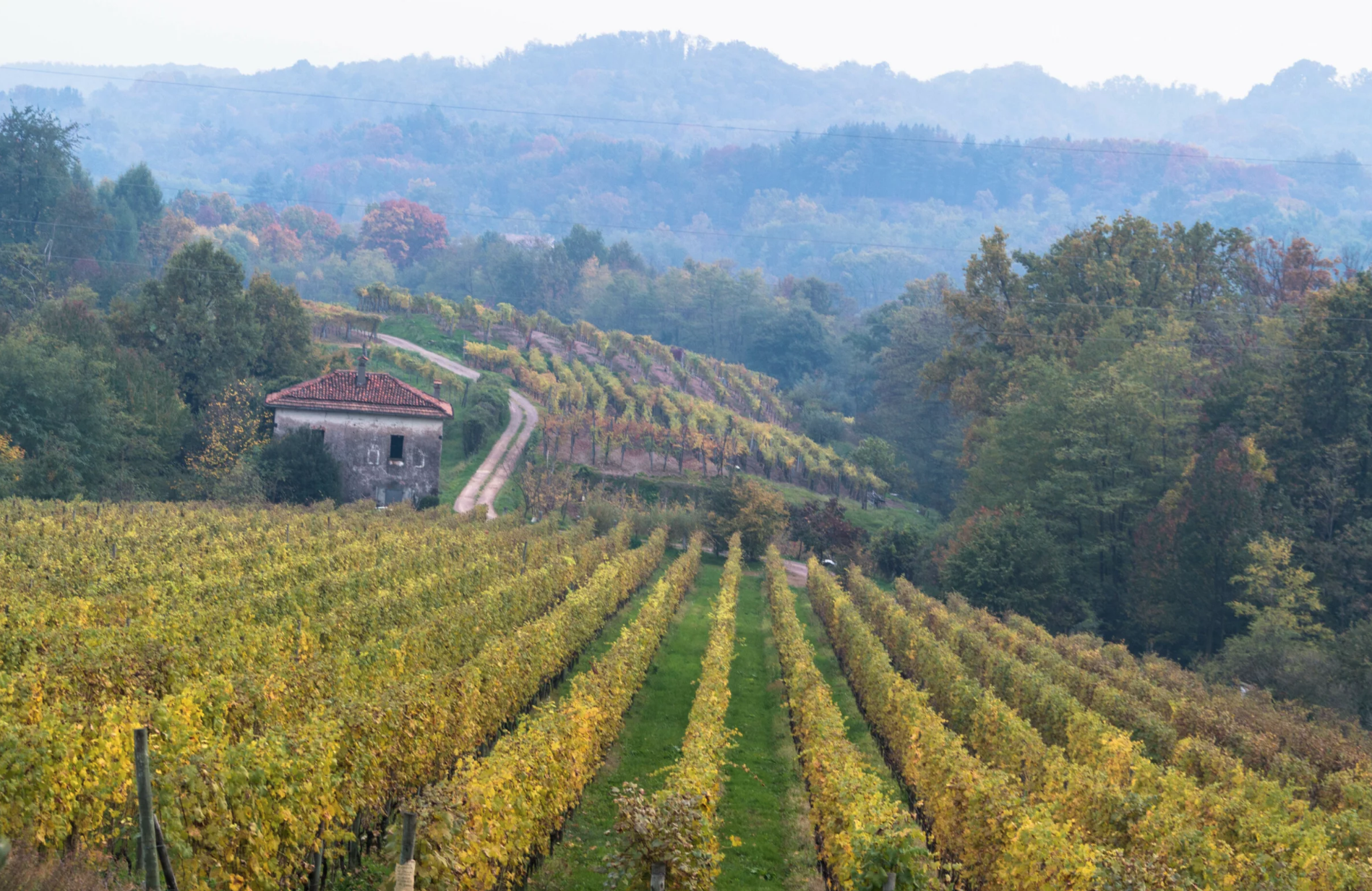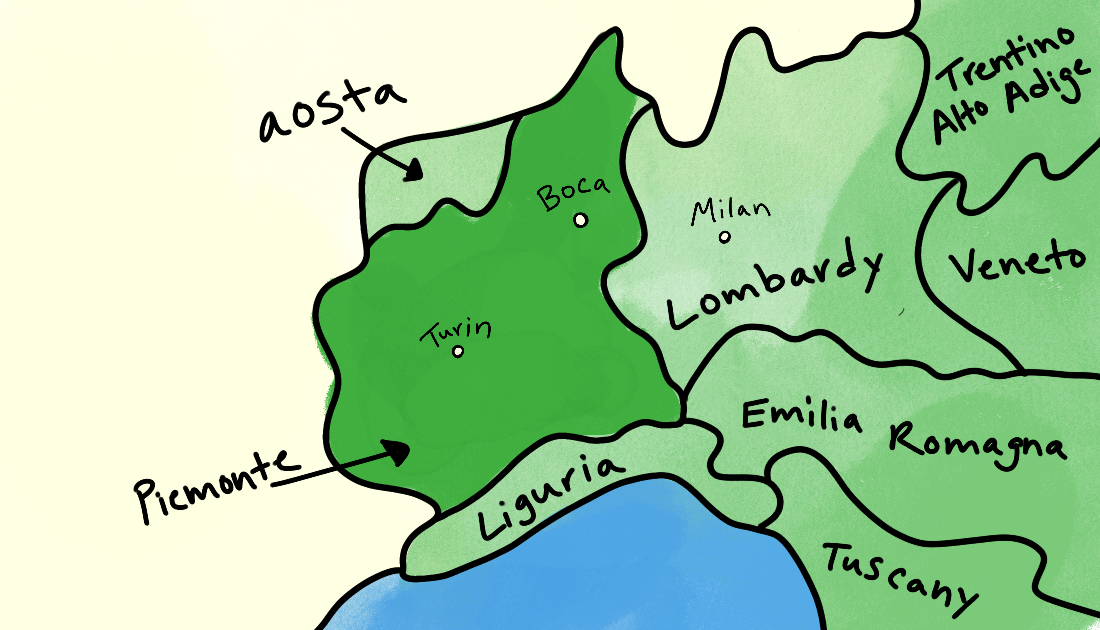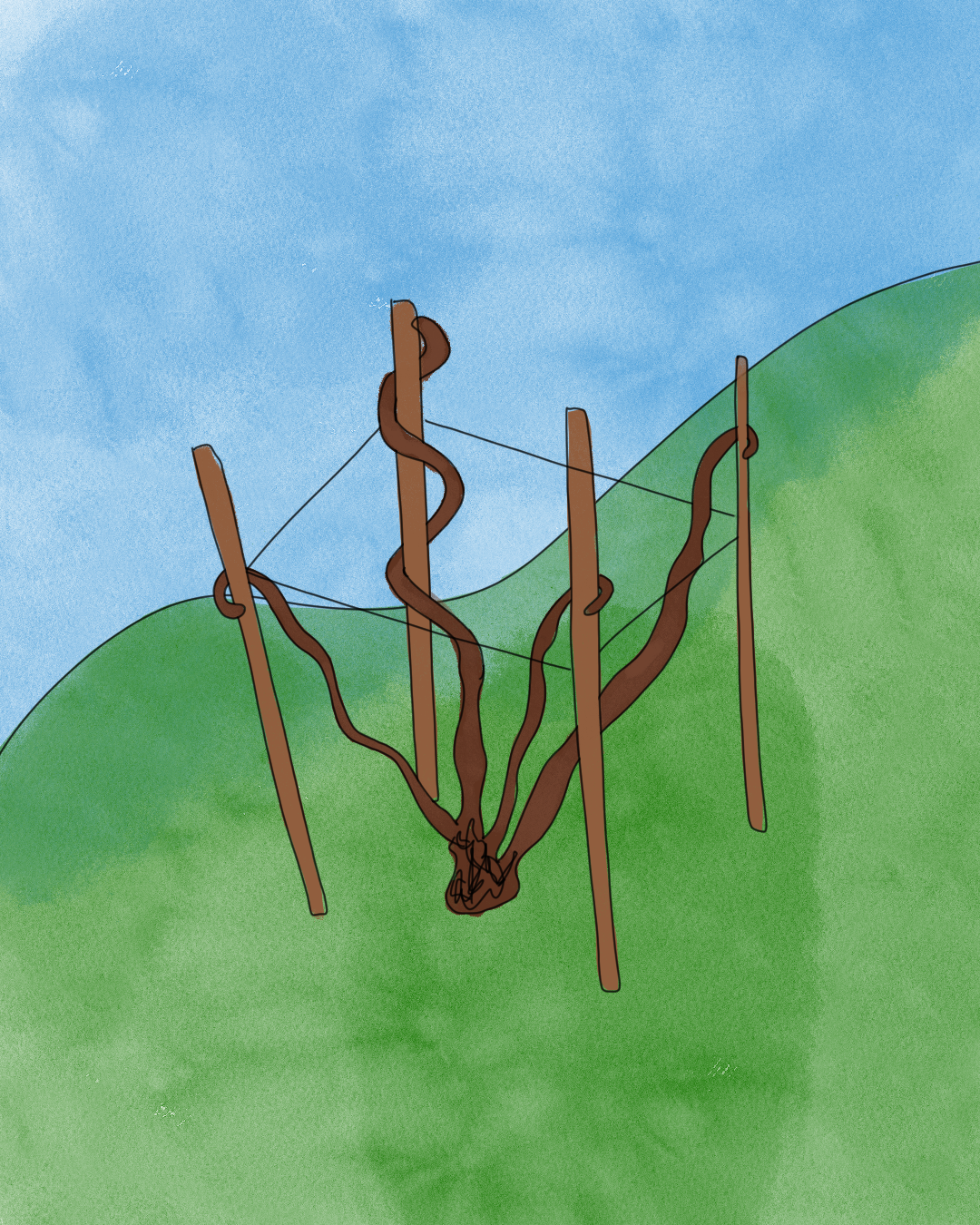Rediscovering Boca: The Revival of Alto Piemonte’s Hidden Gem
Written by Alessandro Peirano
Image provided by Le Piane
More than 2000 years ago, the notorious Roman author and philosopher Pliny the Elder sang the praises of the wines of Boca in his famed manuscript, "Historia Naturalis." Since then, this tiny village, nestled in the austere, pre-alpine far reaches of northeastern Piemonte, earned a righteous place amongst Europe's most significant wine-producing sites, then proceeded to lose itself in a purgatory of insignificance before reclaiming its righteous status once again. Though not remotely as famed as Barolo, Beaune, Radda, or Cornas, Boca does indeed possess all the geological and human attributes capable of producing first-class wines.
The village of Boca sits on dark, looming hills ranging from 400 to 500 meters altitude, surrounded by the stunning Parco Naturale del Monte Fenera. The air is fresh and pure, almost alpine in nature. Winters are cold here, colder than down in the cities of Torino and Milano, which can both be easily reached by a 90 minute drive. The snow capped Alps and Swiss border tower northwards, whilst the foggy, dreary plains of the Pianura Padana and world renowned rice fields of Vercelli and Novara lie the south.
Broadly speaking, Boca belongs to a viticultural area known as "Alto Piemonte" (the "high Piemonte", as in the northernmost in the region). The soils of Boca are singular, characterized by a type of porphyritic rocks distinct from those found in nearby Alto Piemonte communes such as Ghemme and Gattinara, which lay on glacial deposits. This is due to the explosion of an enormous supervulcano 280 million years ago, back when the now separated European and African continents were united. Boca lies above the exact location where this volcano used to exist and the result of this terroir adds a unique savory, mineral austerity toof the wines.
Considered by oenological experts and scientists to be the original birthplace of the Nebbiolo grape, the area is renowned for the infamous "Maggiorina" vine training system. Maggiorina is an ode to the town of Maggiora, a 5 minute drive from Boca. Three to four local varietals (often Uva Rara, Vespolina and Croatina) are planted immediately adjacent to one another, forming a tenacious base capable of extending itself vertically and horizontally. Its only support is lent by huge chestnut poles, hammered into the ground diagonally then tied to the trunk and cordon of the plant with tough willow ribbons. Logically, this singular training system can only be done by hand, and is extenuating.
Maggiorina Vine Training
The two World Wars played an enormous role in Boca’s abandonment. Piemonte, one of the fulcrums of the bloody resistance against the Axis regimes, was in absolute tatters. Long considered one of the country's textile and faucet manufacturing epicenters, Boca and the surrounding valleys lost virtually all their workforces, locals fleeing to the cities of Torino, Milano and Novara in search of a factory job and a livelihood.
Northern Italian cities grudgingly picked themselves up, while rural areas like the Alto Piemonte went forgotten. The Langhe was one of the few non-urban islands of growth, by virtue of its proximity to Alba and heavy investments by the local Ferrero family, the inventors of Nutella and still to this day amongst Italy's wealthiest. The Langhe transformed itself culturally and economically and by default, viticulturally. Barolo gradually became the most prestigious wine, followed closely by Barbaresco. Add to that an unparallelled natural beauty and arguably the most distinct gastronomic heritage in the country, and you have special ingredients for a resurrection. Who else in the world had Hazelnuts like those? Beef like the Fassona? Agnolotti del Plin? White Truffles (the REAL ones)? Alba and its post WW2 wealth catalyzed the Langhe to its contemporary glories, whilst 2 hours north vineyards in Boca began falling into a state of abandonment, their custodians gone. The once mighty beacon of Italian wine was in the wilderness, literally and metaphorically.
"Boca will die with me" grimaced Antonio Cerri in 1994. One of Boca's last remaining stalwarts, Antonio was mightily sick and lived alone next to his 2 hectares of old, terraced vines planted after the Phylloxera epidemic swept down from France, ravaging the area in the late 1890s. Since the war, virtually all 40,000 hectares of local vines were literally "in the weeds", except for Cerri's and a handful of other locals'. Cerri's wines were well known to Christoph Kunzli, a brilliantly gregarious advocate and importer of Italian wine in Bern, Switzerland. When the Swiss realized Cerri, now 80, was on his last legs, he drove south through the alps, reaching Boca in an admirable effort to "pick up the torch" from the dying man and property. Christoph took out loan after loan, purchasing the 2 hectares. After ninety four independent real estate transactions with stubborn owners who were doing little to nothing with their abandoned fields, he pieced together a property sizable (6.5 hectares) and contiguous enough to merit the investment in a proper cellar. Then came the massale selection replanting of the vineyards! All in all a Herculean effort on the part of Christoph, but well worth it in the end.
Following a half decade combating the nefarious Italian bureaucracies and local politicians, none of which assisted the project (except for the legends at the Parco Naturale Fenera), Christoph founded Le Piane and started bottling his own wines. A special wine importer from the Philadelphia area, who'd quietly been paying attention to Boca for some time, brought these wines to the American shores for the first time and has "fought" tenaciously to valorize Boca ever since. His name is Robert Mackin, founder and proprietor of Artisan Wines Inc. (also founded in 1998).
“Nowhere else in Italy is a single producer so uniquely, so singularly tied to the fame of a DOC zone. Were it not for a chance encounter with Antonio Cerri’s wines three decades ago, Cristoph Kunzli would not have embarked on his project and in all likelihood, Boca would have drifted into pure history from its stalwart perch in nearly total obscurity. There was hardly any wine being bottled when he arrived. The little that was being produced was mostly in cask as there was no market for it. Thankfully that has all changed. Alto Piemontese wines have become a “thing”, so to say. Le Piane’s Boca has become recognized not only as the Benchmark wine of Alto Piemonte, but as one of the great Nebbiolo based wines of Italy and in doing so has become a beacon of light for the whole zone. Producers are bottling again, doing a better job with their wines, even replanting vineyards. We are no longer the only ones importing from Boca, and folks don’t call me crazy any longer for deciding to import these wines nearly 2 decades ago." - Robert Mackin, Founder of Artisan Wines Inc.
Le Piane is still today a loyal and truthful continuation of Cerri's legacy. The style of winemaking hasn't changed much since Antonio's days. Big, old barrels, low tech and judicious, minimalist intervention have been hallmarks of Piane's cellar for 26 years now. Christoph will always say the secret lies in the vines and the soils. A patchwork of younger and older Maggiorine, (ranging all the way back to the 1910s) is the core of the estate, with rows of guyots lining the sides. The agriculture is uncertified biodynamic, with heavy emphasis on lunar phases, homemade composts and absolute refusal to utilize anything synthetic against the local pests, even at financial cost. Farming here incurs an inordinate quantity of manual labour and passion. Much like the Shire in Lord of the Rings, the estate is a wild crisscross of terraces, hilly fields, chestnut trees and small wooden bridges crossing alpine streams snaking through forests. The estate’s wild, unpredictable configuration is a stark contrast to the monocultures observed in more "prestigious" viticultural regions.
Nebbiolo is the driving force behind all local wines, and Piane is no exception. Nevertheless, Christoph heavily utilizes the dozen or so other indigenous varietals, refusing to replant them to Nebbiolo. "Nebbiolo, Vespolina and Croatina are our three pillars. They belong together. Croatina adds fat and muscle to the mid palate, while Vespolina lifts the wine with its energy and spice" he told me on my recent trip to Boca. His flagship "Boca DOC", an 85% Nebbiolo and 15% Vespolina blend, sourced from the eldest vines and aged 3-4 long years in huge neutral botti, is a masterpiece. It is driven by a rustic yet weightless power, heralding the typical umami (earthy porcini?) and tart citrus (explosive grapefruit?) that only Nebbiolo grown in these hills can reveal. The Boca is notorious for its potential to age and evolve for decades, and belongs in any Nebbiolo lovers' well stocked cellar. Another brilliant example of Christophs' talent is the Piane "Maggiorina" an ancient co-ferment of 12 or so grapes, ethereal and spicy and vinified sans oak. The "Bianko'' is a gorgeous Stockinger fermented rendition of the local Erbaluce grape. As opposed to the Erbaluce grown south in the town of Caluso, the "Bianko" is from volcanic soils and speaks with the same mineral voracity as its red peers. Chisselled, textured honey, mountain flowers and bitter almonds in High Definition.
"The b..stards never believed we could do it...making the final result even more worthwhile!" Clearly, the local administrators took eventual notice of Christoph's valiant efforts. Today, all visitors driving into town can see the phrase "Citta' del Vino" proudly inscribed on the Boca streetsign: "Welcome to Boca, a city of wine!"
My hat is off to Christoph and all his valorous collaborators. Long Live Boca.
Honorary Mention:
Boca and surrounding villages are the closest wine producing region to Milano Malpensa airport (MXP), a mere 40-minute drive east. Yet another reason to visit this marvelous viticultural zone.
The Local Grapes:
Nebbiolo, Croatina, Vespolina, Erbaluce (also known locally as "Greco di Boca"), Slarina, Durasa, Barbera, Uva Rara, Freisa, Neret, Malvasia
Other high quality producers of BOCA DOC:
Castello Conti, Davide Carlone, Barbaglia



